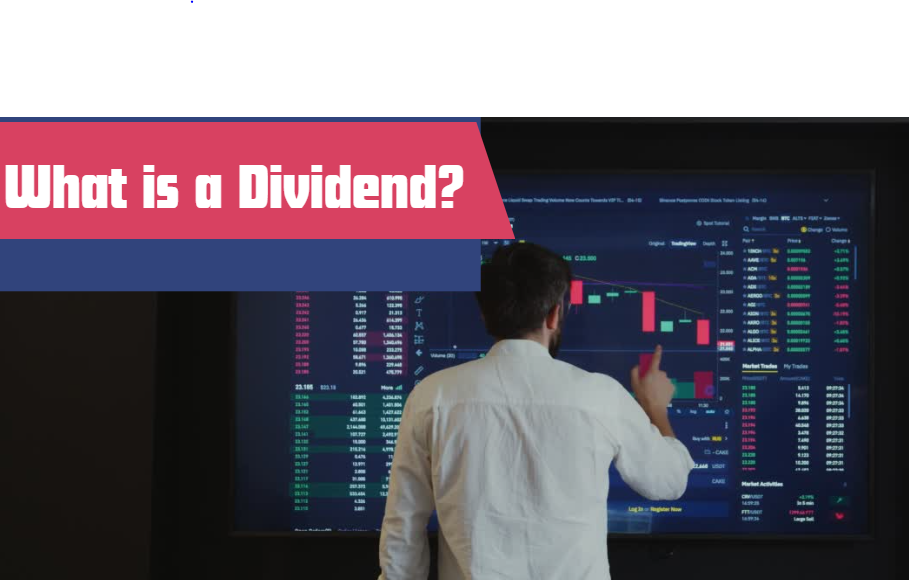A dividend is a portion of a company’s profits paid to its shareholders. It’s typically distributed in cash, but can also come in the form of additional shares (stock dividends) or other property. Companies usually pay dividends quarterly, but some pay them monthly, semi-annually, or annually.
Why Do Companies Pay Dividends?
Companies pay dividends to reward investors for their trust and continued support. It reflects the company’s financial health and stability. By distributing profits, companies show they’re generating excess cash and are confident in their future earnings.
Types of Dividends
Here are the most common types of dividends:
1. Cash Dividends
Paid in cash directly to shareholders. This is the most common type.
Must Read…What is a Beneficiary?
2. Stock Dividends
Additional shares are issued to shareholders instead of cash. It increases the number of shares owned without changing the total value.
3. Special Dividends
One-time payments due to extraordinary profits or asset sales.
4. Property Dividends
Rare. These are non-cash dividends, like assets or products.
5. Scrip Dividends
Companies issue a promissory note to pay a dividend at a later date.
Important Dividend Dates
Understanding these key dates is essential:
- Declaration Date: When the company announces it will pay a dividend.
- Ex-Dividend Date: The cut off date to be eligible for the dividend. If you buy after this date, you won’t receive it.
- Record Date: The company checks its books to determine eligible shareholders.
- Payment Date: When the dividend is actually paid.
Dividend Yield & Payout Ratio
Dividend Yield
It shows how much a company pays in dividends relative to its stock price.
Formula:Dividend Yield = Annual Dividend / Share Price × 100
Example:
If a company pays $2 annually and its share price is $50:2 / 50 × 100 = 4%
Payout Ratio
The percentage of earnings paid out as dividends.
Formula:Payout Ratio = Dividends / Net Income × 100
A lower payout ratio indicates the company is retaining earnings for growth.
Advantages of Dividend Investing
- Steady Income: Ideal for retirees or income-focused investors.
- Reinvestment Potential: Use dividends to buy more shares.
- Signal of Stability: Regular dividends suggest strong financial health.
- Tax Benefits: In many countries, qualified dividends are taxed at lower rates.
Disadvantages of Dividends
- Lower Growth: Dividend-paying companies may invest less in expansion.
- Tax Implications: Dividends may be taxable, depending on your jurisdiction.
- Market Dependence: Not all companies pay dividends, especially growth-focused firms.
How to Start Earning Dividends
- Open a Brokerage Account: Choose one that allows dividend reinvestment plans (DRIPs).
- Buy Dividend Stocks or ETFs: Research companies with a consistent dividend history.
- Hold Long-Term: The longer you hold, the more you earn in dividends and capital gains.
- Reinvest Wisely: Use DRIPs to compound your earnings.
Top Dividend-Paying Sectors
- Utilities
- Consumer Staples
- Healthcare
- Financials
- Real Estate (REITs)
Best Dividend Investing Strategies
- Dividend Growth Investing: Focus on companies that increase dividends over time.
- High-Yield Investing: Target stocks with higher than average dividend yields.
- REIT Investing: Real Estate Investment Trusts often offer high yields.
- ETF Approach: Invest in dividend-focused ETFs for diversification.
FAQs
Q1. Do all companies pay dividends?
No. Many growth-focused companies reinvest profits instead of paying dividends.
Q2. Are dividends guaranteed?
No. Companies can reduce or eliminate dividends during financial downturns.
Q3. How often are dividends paid?
Most companies pay quarterly, but some pay monthly or annually.
Q4. Can I earn dividends on mutual funds or ETFs?
Yes. Many mutual funds and ETFs distribute dividends from their underlying assets.
Q5. What is a DRIP (Dividend Reinvestment Plan)?
A DRIP automatically reinvests dividends into more shares of the same stock.
Q6. Are dividends taxable?
Yes, in most cases. However, the tax rate depends on your country and whether the dividend is “qualified” or “ordinary.”
Q7. Can I live off dividend income?
Yes, many investors build portfolios to generate passive income from dividends, especially during retirement.
Q8. What is a good dividend yield?
A yield between 2% and 6% is generally considered healthy, depending on the sector and market conditions.

